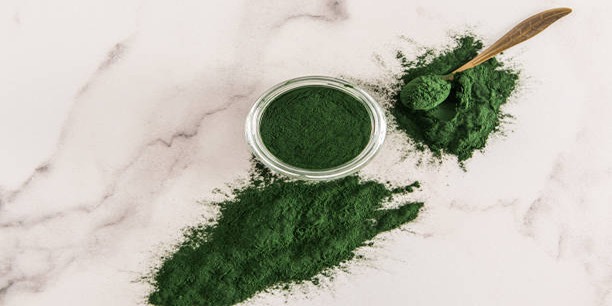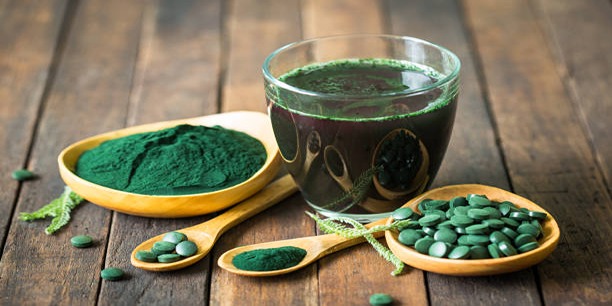Spirulina, the vibrant green superfood, has been garnering acclaim as one of the most nutrient-dense foods on the planet. This microscopic algae, found naturally in mineral-rich freshwater lakes, boasts a spectrum of essential nutrients and antioxidants. It's a living testament to nature's ingenuity — a plant-based source of complete protein, rich in vitamins like B12, iron, and beta-carotene. The quest to a more sustainable and health-conscious lifestyle often shines light on such natural wonders, and spirulina, with its minimal ecological footprint, stands at the forefront of this green revolution. Embarking on the journey to become a Spirulina Superhero isn't just an individual health choice; it represents a pledge to planetary well-being, embracing a food source that's as kind to the earth as it is nourishing to our bodies.
What is Spirulina?

Spirulina is a type of blue-green algae that has been consumed for centuries due to its numerous health benefits. It's commonly found in tropical and subtropical regions, growing in freshwater lakes and ponds. Its nutrient profile includes protein, B vitamins, iron, and beta-carotene, making it a highly sought-after superfood.
The Rise of Spirulina
Spirulina has been consumed by various cultures throughout history, from the Aztecs in Mexico to the Kanembu people in Africa. However, its popularity soared in the 1970s when NASA proposed it as a potential food source for astronauts on long-term space missions. Since then, spirulina has become a staple in health food stores and is widely available in powdered or tablet form.
Why is it considered a Superfood?
Spirulina's rich nutrient profile and numerous health benefits have earned it the title of "superfood." Here are some reasons why:
- High in Protein: Spirulina contains all nine essential amino acids, making it a complete protein source. This makes it an excellent option for vegetarians and vegans.
- Rich in Antioxidants: Spirulina is a potent source of antioxidants, such as phycocyanin, which can help protect the body against oxidative stress and reduce inflammation.
- Loaded with Vitamins and Minerals: It's rich in vitamins B1, B2, B3, iron, and beta-carotene. These nutrients are essential for maintaining overall health and well-being.
- May Help Lower Cholesterol: Some studies have shown that spirulina may help lower "bad" LDL cholesterol levels while increasing "good" HDL cholesterol.
- Could Aid in Blood Sugar Control: Research suggests that spirulina may play a role in blood sugar management and could potentially benefit those with type 2 diabetes.
Cultivating Your Own Spirulina
One of the most exciting things about spirulina is that it can be grown at home with minimal effort. This allows you to have a constant supply of fresh, nutrient-dense spirulina right at your fingertips. Here's how you can get started:
- Get a Culture: You can purchase a starter culture from a reputable source online or from your local health food store.
- Set Up Your Growing Environment: Spirulina is typically grown in a container filled with alkaline water and exposed to sunlight or artificial light. The ideal temperature for growth is between 30-35 degrees Celsius.
- Add the Culture: Once your growing environment is set up, add your starter culture to the water and give it some time to multiply.
- Harvest Your Spirulina: After a few weeks, you should start to see green froth forming on the surface of the water. This is your spirulina! Use a fine mesh strainer to harvest it and rinse it with fresh water before consuming or drying it for later use.
Sustainability and Eco-Friendly Aspects
Aside from its impressive nutrient profile, spirulina is also a sustainable and eco-friendly food source. Here's why:
- Minimal Land Use: Growing spirulina requires minimal land use compared to other protein sources like beef or soy. It can even be grown in urban environments.
- Low Water Footprint: Spirulina cultivation uses less water than traditional agriculture, making it a more sustainable option.
- Reduces Carbon Footprint: Spirulina production uses less fossil fuel and produces fewer greenhouse gas emissions compared to other food sources.
Incorporating Spirulina into Your Daily Diet
While spirulina can be taken in pill form, it's also incredibly versatile as an ingredient in various recipes. Here are easy ways to incorporate spirulina in your diet:
- Smoothies: Add a teaspoon of spirulina powder to your favorite smoothie recipe for an extra boost of nutrients.
- Salad Dressing: Mix spirulina powder into your favorite salad dressing for a pop of color and added health benefits.
- Baked Goods: Spirulina can be added to baked goods such as muffins, bread, or energy bars for a nutrient-dense twist.
- Soups and Stews: Add spirulina powder to soups or stews for a boost of nutrients without altering the flavor too much.
Future of Nutrition with Spirulina

As more people become aware of the benefits of spirulina, it's likely to become an even more popular superfood in the future. Its sustainable and eco-friendly aspects make it an appealing option for those looking to make healthier and more environmentally-conscious choices. So, why not join the ranks of Spirulina Superheroes and reap all the benefits that this green superfood has to offer? The possibilities are endless! So, don't wait any longer and start incorporating spirulina into your diet today.
Conclusion
Spirulina is not just a superfood, but it's also a sustainable and eco-friendly option for our planet. Its numerous health benefits, versatile usage, and ease of cultivation make it an all-around superhero in the world of nutrition. By incorporating spirulina into your daily diet, you not only improve your own health but contribute to the well-being of the planet as well. So, join the spirulina movement and experience all the wonders this green superfood has to offer!




